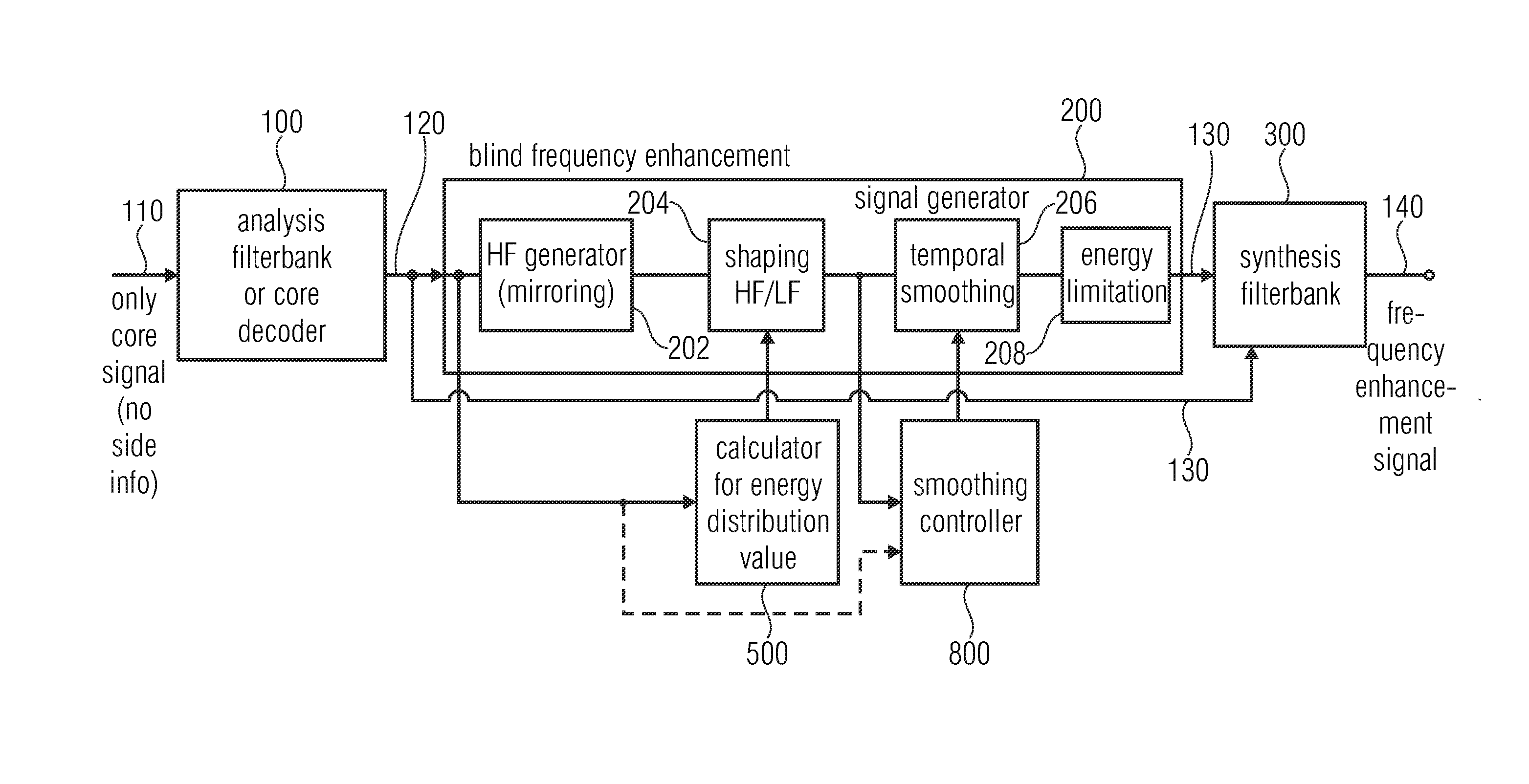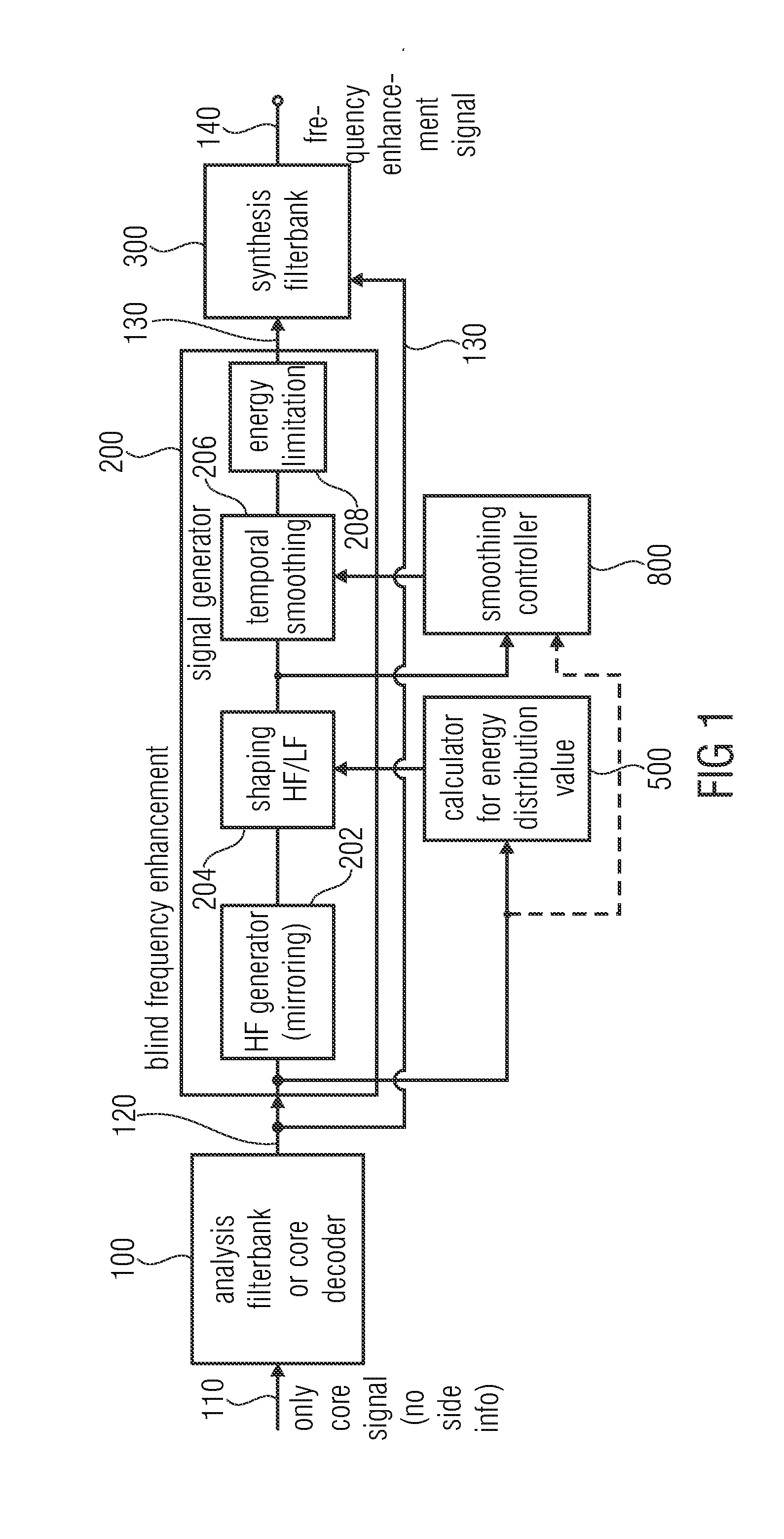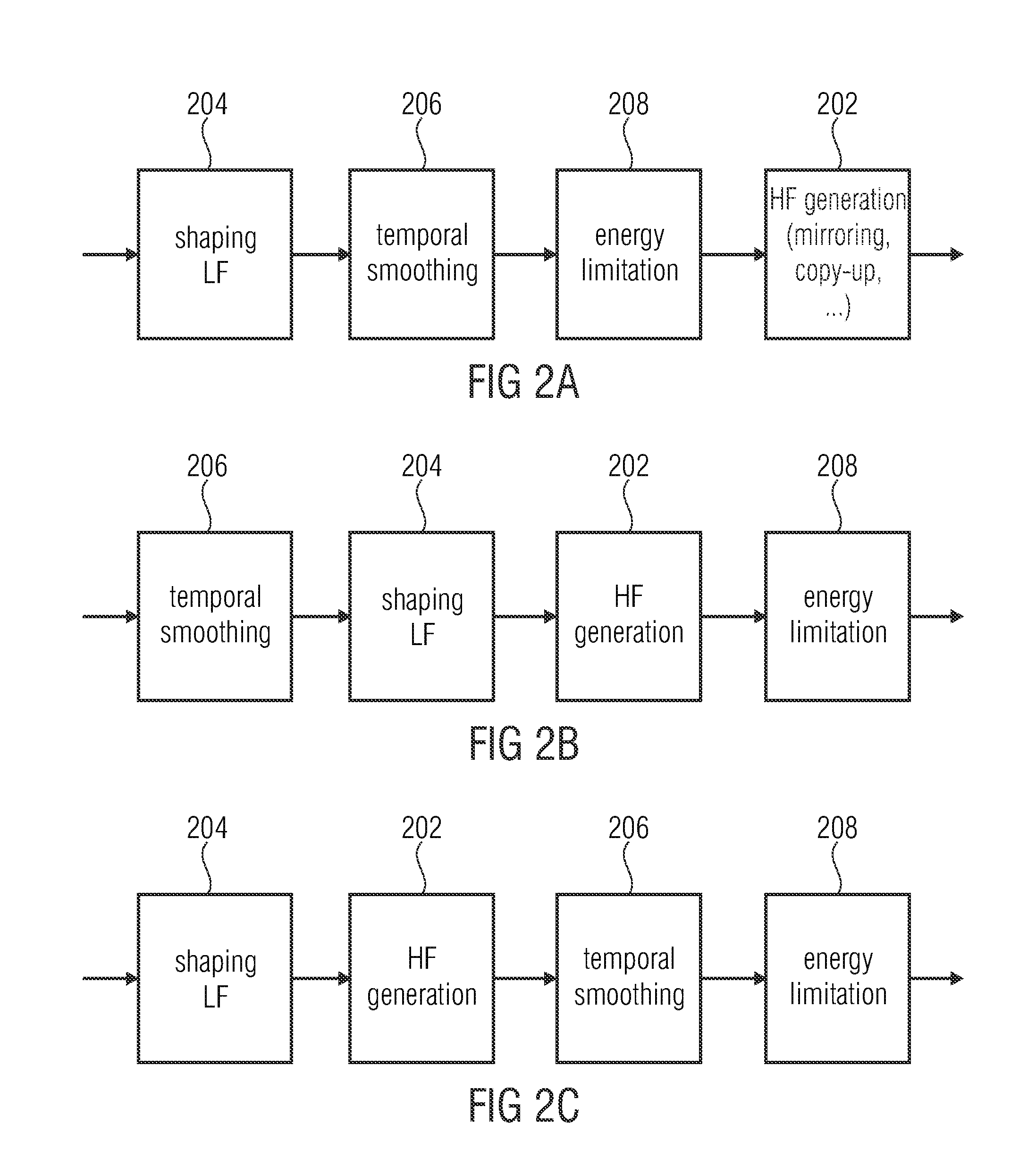Apparatus and method for generating a frequency enhanced signal using shaping of the enhancement signal
a technology of enhancement signal and enhancement signal, applied in the field of audio coding, can solve the problems of not being acceptable for a given application scenario, difficult to generate artificial signals, and most listeners perceive the missing highpass part as a quality degradation, etc., and achieves the effects of low complexity, good audio quality, and easy calculation
- Summary
- Abstract
- Description
- Claims
- Application Information
AI Technical Summary
Benefits of technology
Problems solved by technology
Method used
Image
Examples
Embodiment Construction
[0053]FIG. 1 illustrates an apparatus for generating a frequency enhanced signal 140 in an advantageous implementation, in which the technologies of shaping, temporal smoothing and energy limitation are performed all together. However, these technologies can also be individually applied as discussed in the context of FIGS. 5 to 7 for the shaping technology, FIGS. 8 to 10 for the smoothing technology and FIGS. 11 to 13 for the energy limitation technology.
[0054]Advantageously, the apparatus for generating the frequency enhanced signal 140 of FIG. 1 comprises an analysis filterbank or a core decoder 100 or any other device for providing the core signal in the filterbank domain such as in a QMF domain, when the core decoder outputs QMF subband signals. Alternatively, the analysis filterbank 100 can be a QMF filterbank or another analysis filterbank, when the core signal is a time domain signal or is provided in any other domain than a spectral or subband domain.
[0055]The individual sub...
PUM
 Login to View More
Login to View More Abstract
Description
Claims
Application Information
 Login to View More
Login to View More - R&D
- Intellectual Property
- Life Sciences
- Materials
- Tech Scout
- Unparalleled Data Quality
- Higher Quality Content
- 60% Fewer Hallucinations
Browse by: Latest US Patents, China's latest patents, Technical Efficacy Thesaurus, Application Domain, Technology Topic, Popular Technical Reports.
© 2025 PatSnap. All rights reserved.Legal|Privacy policy|Modern Slavery Act Transparency Statement|Sitemap|About US| Contact US: help@patsnap.com



